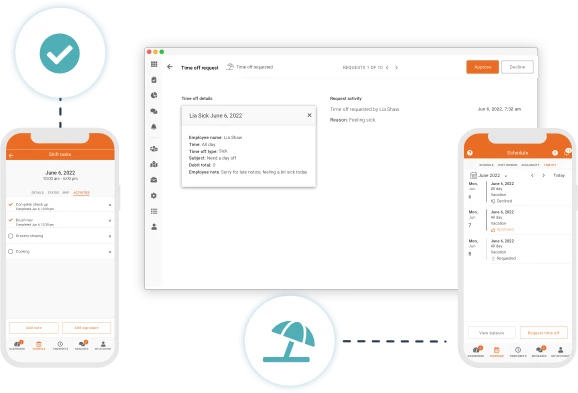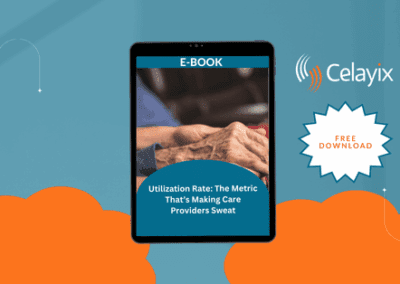Taking a vacation is one of the most important parts of maintaining a healthy work-life balance. Employees who take time off are more productive, happier, and more motivated. However, managing vacation time can be a challenging task for employers. Without proper planning, it can result in scheduling conflicts, employee burnout, and other issues that can impact productivity and morale. We talked briefly about vacation in our recent guide to PTO. In this blog post, we will discuss the best practices for easing the process of employee vacation tracking.
Understanding the Importance of Employee Vacation Tracking

Employee vacation tracking is an essential task for any business, regardless of its size or industry. It ensures that employees take their entitled vacation days and avoids scheduling conflicts. Additionally, it helps employers plan employee schedules and allocate resources effectively.
Moreover, vacation time tracking is a legal requirement in many jurisdictions. For instance, in the US, employers are required to comply with the Family and Medical Leave Act (FMLA). This act mandates that eligible employees should receive 12 weeks of unpaid leave in a year. The reasons for this leave include;
- the birth of a child and to care for the newborn child within one year of birth
- the placement with the employee of a child for adoption or foster care and to care for the newly placed child within one year of placement
- to care for the employee’s spouse, child, or parent who has a serious health condition
- a serious health condition that makes the employee unable to perform the essential functions of his or her job
Employers who fail to comply with these regulations risk legal action, which can be costly and time-consuming. So, if you want to avoid legal action related to employee vacation, we have some advice!
Best Practices for Employee Vacation Tracking
To ensure a smooth and efficient process of employee vacation tracking, here are some best practices that businesses should consider:
1. Establish a clear vacation policy
Businesses should establish a clear vacation policy that outlines the process for requesting and approving vacation time. It should also highlight the number of vacation days employees are entitled to, and any restrictions or conditions that apply. Communicate your policy to all of your employees to ensure that they understand the rules and expectations.
2. Use technology to track vacation time
Manual tracking of employee vacation time can be time-consuming and prone to errors. Using a workforce management software like Celayix can streamline the process by automating the tracking of vacation time. Our software can also provide real-time visibility into employee vacation balances, making it easier for managers to plan work schedules.
3. Encourage vacation time usage

Workload concerns or fear of being replaced can cause many employees to hesitate about taking their vacation time. This is an important elements of employee vacation tracking. However, not taking vacation time can lead to burnout and decreased productivity. Employers should encourage employees to take their vacation time by highlighting its importance and creating a workplace culture that values work-life balance.
4. Plan ahead
To avoid scheduling conflicts and ensure timely completion of work, employers should plan ahead for employee vacation time. They can do this by using workforce management software to forecast staffing needs and plan work schedules accordingly.
5. Maintain accurate records
Organization is a key factor in tracking employee vacation. Employers should maintain accurate records of employee vacation time to comply with legal requirements and avoid disputes. It also means that employees will be paid correctly for vacation time that they are entitled to.
Using Celayix Workforce Management Software to Track Employee Vacation Time
Celayix is a powerful workforce management software that can help businesses manage employee vacation time effectively. Here are some features of Celayix that can make vacation time tracking easier:
1. Real-time visibility into employee vacation balances
Celayix provides real-time visibility into employee vacation balances, making it easier for managers to plan work schedules and avoid scheduling conflicts.
2. Automated vacation time tracking

Celayix can automate the tracking of vacation time, reducing the time and effort required to manage employee vacation time manually. You can track and utilise multiple types of PTO, including vacation and sick time. You can also specify rates of pay based on how your company operates.
4. Forecasting and scheduling
Celayix can help businesses forecast staffing needs and plan employee schedules ahead of time. Often, companies that don’t effectively track employee vacation struggle to plan accordingly and end up approving vacation days at a bad time.
Effective employee vacation tracking is an essential task for businesses of all sizes. It ensures that employees take their entitled vacation days, avoids scheduling conflicts, and maintains a healthy work-life balance. By following the best practices discussed in this blog post, businesses can streamline the process of vacation time tracking and create a positive work environment that values employee well-being.
Using workforce management software like Celayix can further simplify the process by automating vacation time tracking, providing real-time visibility into vacation balances, and helping businesses plan work schedules ahead of time. With these tools, businesses can focus on their core operations while ensuring that their employees are well-rested, productive, and happy. If you’re interested in learning more about Celayix, get in touch with a solutions advisor today here!




